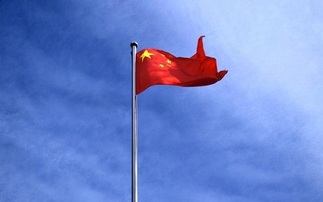What is your investment outlook for 2021?
We believe that over the course of 2021 we will continue to see an earnings recovery across Asia as the region has been relatively successful in containing Covid-19 versus the west. While China has led from the front, we expect other countries to also demonstrate improvements going forward.
One of the key drivers of this improvement will be the availability of an effective vaccine. We have already seen the positive response to recent news of vaccines with high efficacy levels. One of the foremost effects we are likely to then see is a recovery in tourism, which is particularly relevant to Asia, where several economies rely on tourism-led demand.
Meanwhile, companies that benefit from long term structural growth trends in the region will continue to see sustained earnings growth in the coming years.
What do you think could surprise the market in 2021?
It would be a positive surprise for equity markets if the Sino-US relationship takes a constructive turn under the new US administration. This would lead to a significant resumption in global trade flows and bolster economic growth in several markets. On the flip side, if we fail to develop an effective vaccine and make it widely available, and if Covid-19 does not come under control, the global economic backdrop would weaken considerably and weigh on sentiment.
What themes, sectors or regions would offer opportunities or potential risks in a post Covid-19 world?
Our focus is on the best investment ideas to generate alpha across all investment environments. We maintain that short-term disruptions open the door to long-term opportunities. We are looking for investment ideas arising from the shifts caused by the Sino-US non-cooperation. New companies coming to market also expands the investment universe and opens doors to new business models and potential future leaders.
We are focusing on opportunities that are led by innovation, particularly technology-led innovation, as we can see first-hand how it is driving change in Asia. The digital transformation of the consumer landscape is a strong case in point and will continue to drive shifts in behaviour and demand patterns for both products and services. We have always favoured strong businesses that have strong management teams at their helm.
We are keeping a close watch on the progress of the Covid-19 vaccine development. We have already seen the positive impact from encouraging vaccine news on sentiment. From our perspective, it is more important to have better visibility on specific aspects of economies opening up on an intra-regional basis in Asia, such as the resumption of cross-border travel, among other factors. We are monitoring the universe for opportunities that may arise consequently, with a close watch on underlying valuations and prospects for fundamentals.
How do you expect sustainability factors to influence returns and how is this reflected in your portfolio?
There is growing awareness about the need for higher sustainability standards in the region, particularly as institutional participation in local stock markets increases. We must recognise that as capital allocators, we play a key role in engagement and education. We have been actively talking to corporates in the region, particularly in China, to heighten their awareness and sensitivity to such factors. We have also chosen to exit holdings where we were not seeing the needle move in the right direction. The portfolio continues to score well on ESG metrics, which highlights the importance we place on sustainability factors.
What are your areas of highest conviction and where are you avoiding?
The portfolio is focused on beneficiaries of intra-regional demand in Asia. Subsequent positioning reflects the opportunities and risks mentioned above. There is conviction in preferred holdings among best-in-class banks in Asia, leading insurers, biotechnology companies driving drug developments, as well as technology bellwethers with a high moat for competition. There is caution towards materials, energy and industrials.
Our mosaic approach to investing is an investment philosophy that has been tested across a variety of market environments. Therefore, the aim is to continue to offer investors both an opportunity for upside participation as well as a cushion for downside protection.
Learn about Fidelity's Asia expertise and investment strategies
Important information
This information is for investment professionals only and should not be relied upon by private investors. The value of investments can go down as well as up and you may not get back the amount invested. Investors should note that the views expressed may no longer be current and may have already been acted upon. The Fidelity Asia Fund has the potential of having high volatility either from its composition or the techniques used to manage it. It uses financial derivative instruments for investment purposes, which may expose it to a higher degree of risk and can cause investments to experience larger than average price fluctuations. Changes in currency exchange rates may affect the value of an investment in overseas markets. Investments emerging markets can also be more volatile than other more developed markets. Reference in this article to specific securities should not be interpreted as a recommendation to buy or sell these securities, but is included for the purposes of illustration only. Investments should be made on the basis of the current prospectus, which is available along with the Key Investor Information Document, current annual and semi-annual reports free of charge on request by calling 0800 368 1732. Issued by FIL Pensions Management, authorised and regulated by the Financial Conduct Authority and Financial Administration Services Limited, authorised and regulated by the Financial Conduct Authority. Fidelity International, the Fidelity International logo and F symbol are trademarks of FIL Limited. UKM1220/32610/SSO/NA













